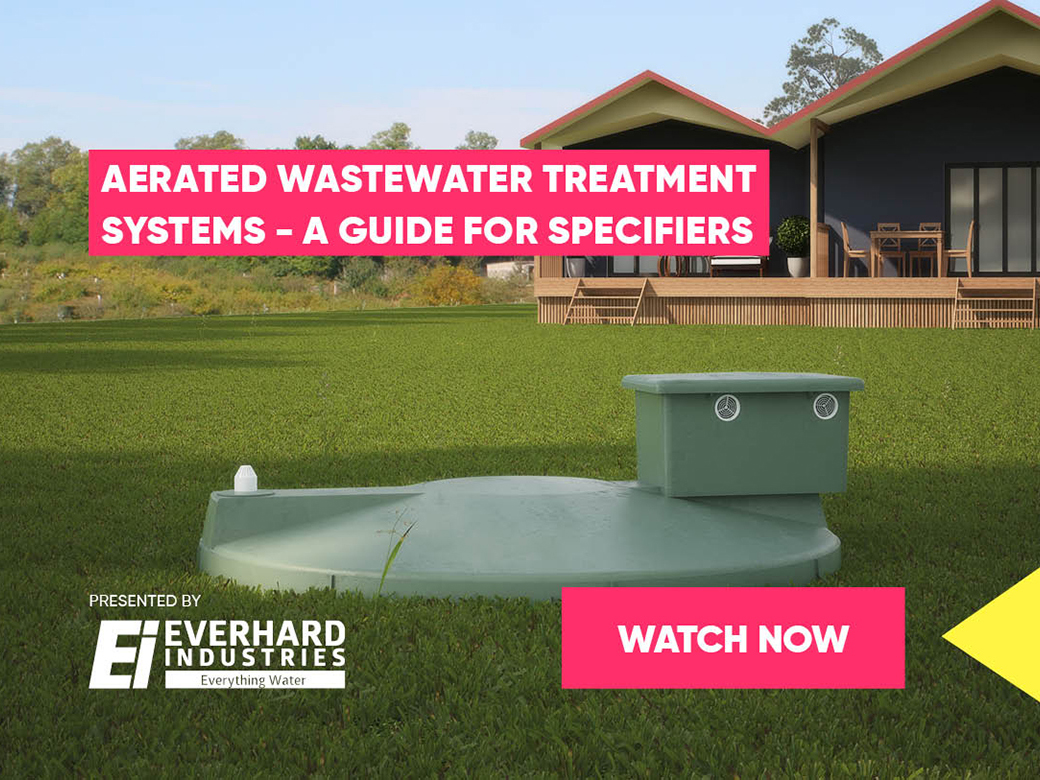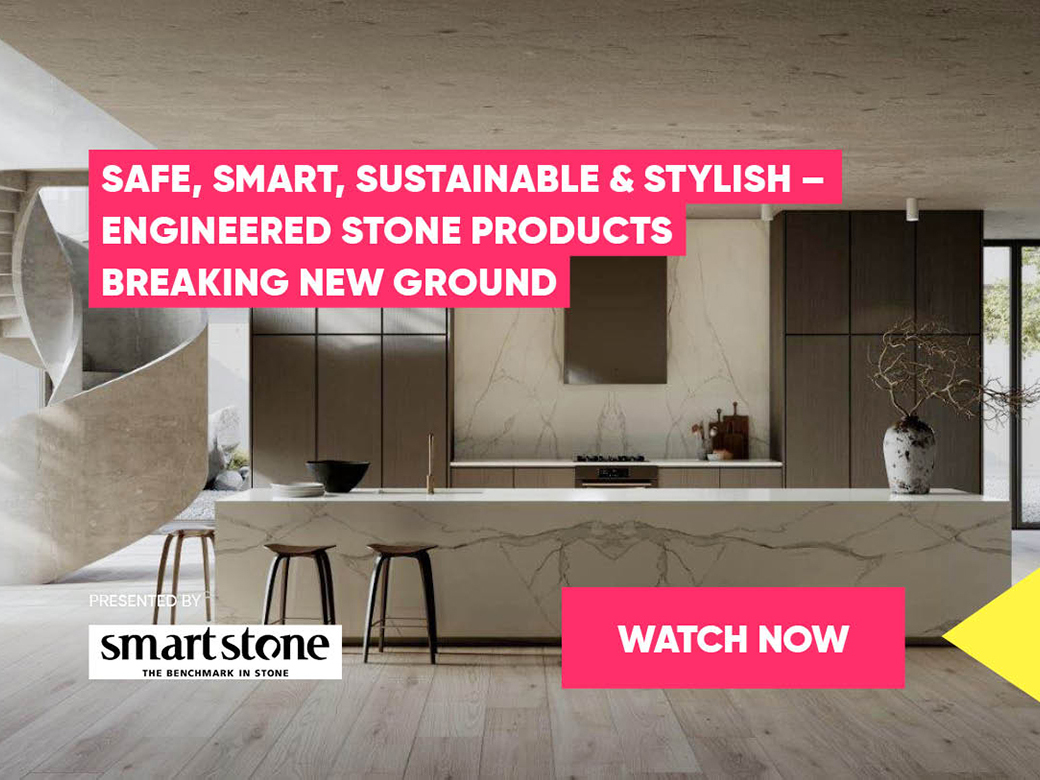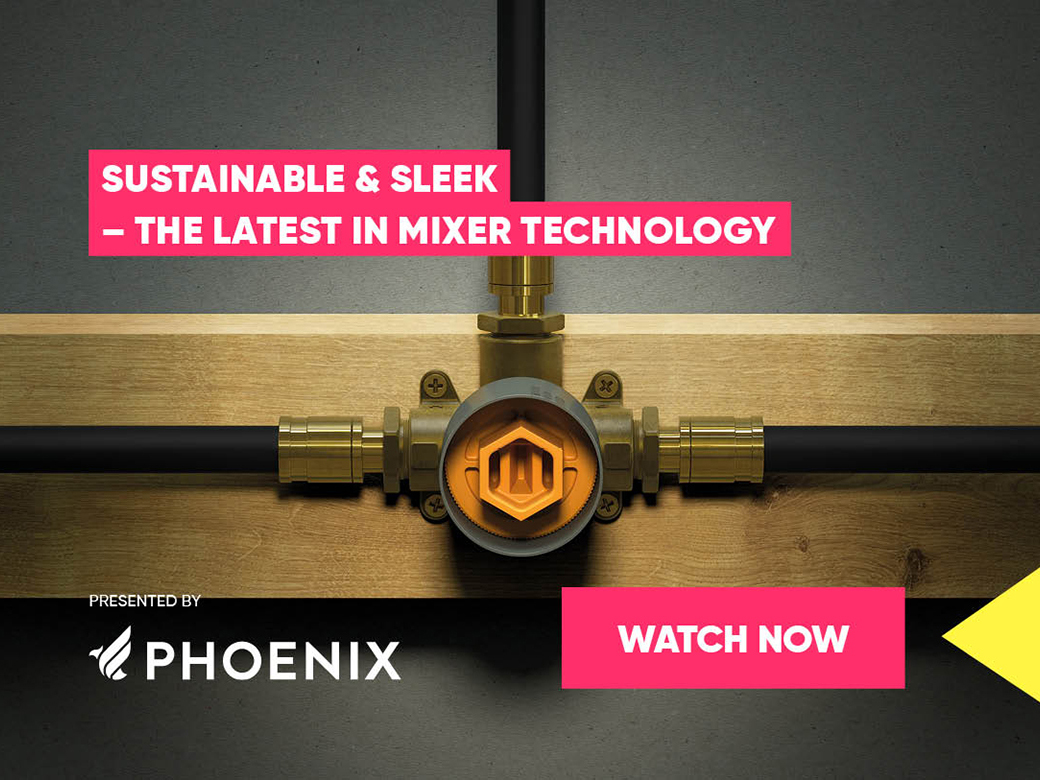The October 2022 season of CPD Live is now available to view on demand. Relive sessions first streamed live on 12-13 October 2022. The program is expertly curated for you, featuring insightful topics around the industry’s latest advancements.
Watch presentations hosted by CPD Live and partnered by leading brands including Everhard, Norfolk, Promat, Saniflo, Ronstan, Smartstone, Kaolin, Stormtech and Phoenix.
You can re-watch all of your favourite sessions and catch up with any you may have missed! Best of all, each session offers one formal CPD point. With so many topics to choose from, CPD Live offers the most dynamic way for you to earn your CPD points online. Simply follow the links below to view each session on demand.
Discover the 2022 October CPD Live topics:

Aerated Wastewater Treatment Systems - a Guide for Specifiers
Traditionally, homes without access to a main sewer line have relied on septic tanks to deal with their wastewater. While these tanks are able to perform this function in a consistent and reliable manner, they are not very effective in terms of treating waste. Once water finds its way into a septic tank, its potential to be used again is effectively over.
The good news on this front is that an effective alternative is available. Homeowners and specifiers who are conscious of the need to save and re-use have the option of an Aerated Wastewater Treatment System. Far more effective than septic tanks, these systems produce effluent of a quality that is high enough for re-use on gardens and so forth.
Titled ‘Aerated Wastewater Treatment Systems - a Guide for Specifiers’, this CPD Live session takes a close look at these products. Beginning, by outlining how they function, it lays out relevant design considerations associated with them, as well as the regulatory framework that those working with them need to know.
At the end of this presentation, you should be able to:
•Explain why residential wastewater systems sometimes need to be considered as alternatives to mains sewer and outline the various types available.
•Define ‘Aerated Wastewater Treatment Systems’ and explain the ways in which they differ from septic tanks.
•Identify the regulatory framework that applies to residential wastewater systems and how it has been updated in recent times.
•Outline the various design considerations – including factors like wastewater load and location of wastewater system – that specifiers must consider.
•Outline the installation and maintenance requirements associated with Aerated Wastewater Treatment Systems.
(PC 28 PROJECT INITIATION AND CONCEPTUAL DESIGN, PC 33 PROJECT INITIATION AND CONCEPTUAL DESIGN, PC 43 DETAILED DESIGN AND CONSTRUCTION DOCUMENTATION, PC 45 DETAILED DESIGN AND CONSTRUCTION DOCUMENTATION)
Watch On-Demand Now

Shading Systems, Blind Fabrics, and how to Navigate the Pathways to Sustainability
For specifiers - in these times of improved product performance, regulatory changes and increased awareness of things like sustainability and safety - choosing architectural products can be a tricky task. Beyond the obvious design considerations, architects and interior designers need to also consider whether a given product is fit for purpose, whether it meets all the relevant regulations, and more.
To take the example of blinds and curtains - products that have an important role to play in terms of design, glare control, acoustic control, environmental outcomes, and more - it can be difficult to choose the right products; window coverings that are not only suitable for their particular requirements, but also sustainable.
This CPD Live session examines this precise dilemma. Focusing on blinds and curtains, and citing real life scenarios, it outlines the best ways for specifiers to navigate their way to functionality, compliance and sustainability.
At the end of this presentation, you should be able to:
•Outline all the factors involved in evaluating the suitability of window coverings for a specific application.
•Identify the regulations that relate to the use of window coverings in commercial and residential applications.
•Evaluate specific blinds and curtain products in terms of their sustainability.
•Explain how blinds and curtains can improve thermal efficiency and help cut carbon emissions.
•Outline the range of window coverings available on the Australian market and explain how they vary in terms of quality.
(PC 18 PROJECT INITIATION AND CONCEPTUAL DESIGN, PC 28 PROJECT INITIATION AND CONCEPTUAL DESIGN, PC 43 DETAILED DESIGN AND CONSTRUCTION DOCUMENTATION, PC 45 DETAILED DESIGN AND CONSTRUCTION DOCUMENTATION)
Watch n-Demand Now

Fire Protection in Modular & Prefabricated buildings
As distinct from traditional building methods, lightweight, modular and prefabricated construction – also referred to as Modern Methods of Construction (MMC) – involves the manufacturing of various building sections offsite. The main attractions of MMC include the fact that it can significantly cut construction time and costs, without compromising quality. For this reason, we have seen a significant increase in the number of modular and prefabricated buildings in recent years. While this trend is broadly good news and grounds for optimism in an industry under pressure, it does bring with it some unintended challenges. Most notably, when employing MMC, it is important to realise that the fire protection techniques used elsewhere, do not necessarily apply. If not designed and built correctly, modular and prefabricated buildings can represent a fire risk.
Beginning by explaining the reasons for these risks, this presentation goes on to outline the best ways to address them. It shows specifiers how to reap the benefits associated MCC, without lowering fire safety standards.
At the end of this presentation, you should be able to:
•Outline the key characteristics of lightweight, modular and prefabricated construction.
•Explain the benefits associated with these and why MCC is becoming more common.
•Identify the different ways fire behaves in buildings, depending on materials and construction systems.
•Outline the ways to reduce the risk of fire in modular and prefabricated buildings and ensure they meet all relevant standards.
•Identify the products and techniques that specifiers need to consider to reduce fire risk.
(PROJECT INITIATION AND CONCEPTUAL DESIGN: PC 28, PC 31, DETAILED DESIGN AND CONSTRUCTION DOCUMENTATION: PC 39, PC 41, PC 56)
Watch On-Demand Now

A New Way of Plumbing - Providing Flexibility in Design
Though plumbing is an integral part of most building projects, it does tend to cause of a lot of difficulties. Whether they involve barriers to access, the need to drill into wall cavities, or the renovation of existing wet areas, these difficulties also tend to be both labour-intensive and expensive.
On top of that, conventional plumbing techniques place significant constraints on architects and designers. They limit the possible locations for bathrooms, kitchens, and laundries – and because of this – they force these professionals into choices they would otherwise avoid.
Now, with the introduction of several new technologies, there is hope that all these problems may become things of the past. Products like macerator pumps, grey water pumps, and lifting stations have the potential to introduce a new way of plumbing.
In this presentation, our speakers explain how these products work, how they can make life better for you (as an architect or designer), and how to incorporate them into your next building project.
At the end of this presentation, you should be able to:
•Outline the difficulties and challenges associated with conventional plumbing.
•Identify the latest plumbing products on the market and explain how they work.
•Nominate the types of applications for which macerator pumps, grey water pumps, and lifting stations are most suitable.
•Explain how these products can help solve many of the problems associated with plumbing and be of benefit to architects and designers.
(PC 18 PROJECT INITIATION AND CONCEPTUAL DESIGN, PC 28 PROJECT INITIATION AND CONCEPTUAL DESIGN, PC 43 DETAILED DESIGN AND CONSTRUCTION DOCUMENTATION)
Watch On-Demand Now

Tensile Mesh Barriers and Facades - Unpacking the Key Design Considerations
Developed in Germany in the 1990s, tensile mesh is a metal mesh fabric of stainless-steel cables formed into a filigree net of diamond shaped openings. Noted for its unique capacity to create striking façade barriers of openness and transparency, the material finds use in a range of applications, including as anti-throw barriers on pedestrian bridges, as greenery trellis structures, and even as zoological enclosures. To get the best out of this versatile material, specifiers need to be aware of several key considerations. They need to understand, for example, that tensile mesh needs to be held in place with a level of pre-tension to ensure it resists deflection; that its form is largely dictated by the boundary structure that accompanies it; and that, when working with tensile mesh, the pathways to compliance vary from project to project.
In this presentation, our speakers discuss these matters and more. Citing real world examples, they outline the key design considerations for those working with tensile mesh.
At the end of this presentation, you should be able to:
•Outline the attractions and benefits of tensile mesh, as used in façade barriers.
•Identify the principles of lightweight structures using tensile mesh and the basics of how mesh barriers and facades work.
•Explain how boundary conditions, also referred to as mating structures, impact the final form of mesh barrier installations.
•Outline the complexities associated with achieving compliance for mesh barriers and façades and explain the best ways to do so.
•Identify best practice design for façade and barrier applications using tensile mesh.
(PC 18 PROJECT INITIATION AND CONCEPTUAL DESIGN, PC 28 PROJECT INITIATION AND CONCEPTUAL DESIGN, PC 43 DETAILED DESIGN AND CONSTRUCTION DOCUMENTATION, PC 45 DETAILED DESIGN AND CONSTRUCTION DOCUMENTATION)
Watch On-Demand Now

Safe, Smart, Sustainable & Stylish – Engineered Stone Products Breaking New Ground
Since its introduction in the late 1980s, engineered stone has established itself as a genuine alternative to natural stone. Solid, durable, and non-porous, it is ideal for countertops, backsplashes, walls, and even floors. At the same, engineered stone – or more specifically the quartz crystalline silica found in engineered stone products – poses a potential health risk. In cases where correct procedures are not followed, dust generated during the fabrication process can cause a range of serious illnesses, including silicosis. The good news on this front is that a new generation of engineered stone products, containing significantly reduced levels of quartz crystalline silica, has emerged. Combined with continued strong regulation and education concerning correct fabrication and installation techniques, these products have proven themselves safe to work with. On top of that, given that they contain up to 56% recycled material, these new generation products meet another key requirement, that of sustainability. This CPD Live presentation examines all of the above and more. Outlining the advantages of engineered stone, in terms of quality, performance, durability, and aesthetics, it details why these products can be correctly described as both safe and sustainable.
At the end of this presentation, you should be able to:
•Identify the Occupational, Health, and Safety concerns associated with quartz crystalline silica and some engineered stone products.
•Explain how some of the most recently introduced products of this type address these concerns and are therefore safe to use.
•Explain why and how the range of engineered stone products vary in terms of environmentally sustainability.
•Identify the benefits of engineered stone, in terms of aesthetic considerations, durability, and performance.
•Outline the best ways to identify products that meet all the above requirements, and are therefore not just functional and durable, but also safe and sustainable.
(PC 24 PROJECT INITIATION AND CONCEPTUAL DESIGN, PC 28 PROJECT INITIATION AND CONCEPTUAL DESIGN, PC 31 PROJECT INITIATION AND CONCEPTUAL DESIGN, PC 45 DETAILED DESIGN AND CONSTRUCTION DOCUMENTATION)
Watch On-Demand Now

Standards, Materials, Manufacturing & How to Find Quality Porcelain Tiles
The specification of porcelain tiles is a task that should be approached with caution. While the sheer range and variety of products available may give the impression of spoiling the market for choice, a closer look at many of these products reveals their lack of quality. For tiles, poor quality equates to low durability, a short service life, and poor environmental performance, so it is an important consideration.
But how do these low-quality tiles even make it to market? In large part, this can be explained by the disparity between international standards (concerning manufacturing and tolerances) and Australian standards (which deal with installation and fixing).
Because the international standard is so lax and the best tiles far exceed it, assessing quality is not a simple matter. It involves considering the manufacturing process, the raw materials used, and also factors like printing, firing, and polishing methods.
This CPD Live examines these matters and more. It shines a light on how to identify the best products for your projects.
At the end of this presentation, you should be able to:
•Identify the various standards (both local and International) that relate to the manufacture and installation of porcelain tiles in Australia.
•Outline the affects these various standards have on the quality of porcelain tile available in Australia.
•Identify the primary ingredients of porcelain tiles and explain their impacts on the tile body and its quality.
•Outline the various other factors – including production techniques, printing methods, new technologies, etc. – that affect tile quality.
(PC 18 PROJECT INITIATION AND CONCEPTUAL DESIGN, PC 28 PROJECT INITIATION AND CONCEPTUAL DESIGN, PC 43 DETAILED DESIGN AND CONSTRUCTION DOCUMENTATION, PC 45 DETAILED DESIGN AND CONSTRUCTION DOCUMENTATION)
Watch On-Demand Now

The Latest NCC Changes and their Implications for Level Threshold Compliance
The most recent iteration of the National Construction Code (NCC 2022) includes several changes that relate to plumbing and drainage systems. It includes new provisions for the waterproofing of wet areas and weatherproofing of external walls; a provision associated with falls for floor wastes; new requirements around pipe sizing; and more.
NCC 2022 also references the concept ‘Livable Housing Design’ – the creation of homes that meet the needs of their occupants, including those with ambulatory challenges, as they change across their lifetimes.
This change has implications for a range of things, including drainage systems and those who specify them. To take one example, the new provision requires all new homes to include at least one accessible bathroom and shower on its ground floor.
In this CPD Live session, we outline all of these plumbing-related NCC changes and illuminate the ways that one class of products, linear drainage systems, can help ensure you comply with or exceed them.
At the end of this presentation, you should be able to:
•Define the term ‘Livable Housing Design’ and explain how it relates to bathrooms, plumbing, and drainage systems.
•Explain the ways Livable Housing Design has been incorporated into the National Construction Code (NCC 2022).
•Outline the changes to NCC 2022 that relate to plumbing and drainage systems.
•Explain the ways that linear drainage meets the requirements of people with ambulatory challenges.
•Outline the ways in which linear drainage systems meet or exceed the modified requirements of NCC 2022.
(PC 18 PROJECT INITIATION AND CONCEPTUAL DESIGN, PC 28 PROJECT INITIATION AND CONCEPTUAL DESIGN, PC 43 DETAILED DESIGN AND CONSTRUCTION DOCUMENTATION, PC 45 DETAILED DESIGN AND CONSTRUCTION DOCUMENTATION)
Watch On-Demand Now

Sustainable & Sleek – the Latest in Mixer Technology
While for the most part those who use mixers and tapware (i.e. all of us) are satisfied with their functionality and appearance, for those tasked with installing and maintaining them, they have long been the source of disruption and frustration.
Traditional mixer bodies cause plumbers a range of problems. Because of the nature of their component parts and installation methods, tapware selection must be locked in very early in the construction process, the installation process for multi-res is inefficient and time consuming, design decisions are inflexible, and tapware changes are un-viable once tiling is complete. On top of that, even years after the project is complete, changing tapware is time-consuming and costly.
Now, with the release of the latest mixer technology, all that has changed. Featuring innovations in terms of componentry, such products stand to benefit not only plumbers but also builders, architects, and consumers.
This CPD Live identifies these new technologies, explains how they differ from traditional tapware, and explains how to best incorporate them into architectural projects.
At the end of this presentation, you should be able to:
•Recognise universal inwall plumbing terminology.
•Describe traditional mixer bodies, their component parts, and the methods used to install them.
•Outline the advantages of the advantages of the latest mixer technologies on the market as they compare to traditional mixer bodies.
•Explain the benefits of universal in-wall plumbing systems for residential and commercial projects.
•Identify the standards that apply to the installation of tapware in Australia.
(PC 18 PROJECT INITIATION AND CONCEPTUAL DESIGN, PC 28 PROJECT INITIATION AND CONCEPTUAL DESIGN, PC 43 DETAILED DESIGN AND CONSTRUCTION DOCUMENTATION, PC 45 DETAILED DESIGN AND CONSTRUCTION DOCUMENTATION)
Watch On-Demand Now
Head to the new CPD Live platform to explore all the CPD sessions available for your viewing and earn CPD points anywhere you have an internet connection. Visit cpdlive.com.au

